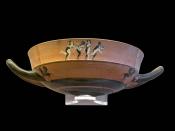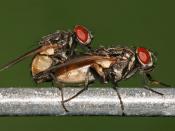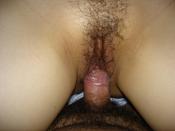The topic selected for the presentation is sexual disorders
and dysfunctions. This paper will focus on the treatment of
these problems. The audience will benefit from this subject
matter by learning how to cope with and treat the problems at
hand. The organization of this project was divided up into
disorder, causes, treatments, and effects on relationships.
Disorders of Sexual Desire.
Hypoactive sexual desire disorder (HSDD) is the lack of
desire for sexual activity, which can cause distress on an
individual (Strong, DeVault, Sayad, & Yarber, 2005). There are
several treatments for this disorder. Ceasing medications which
cause a decreased libido such as Prozac, Zoloft, and Paxil assist
in the process of correcting HSDD (Deglin & Vallerand, 1999).
Also, due to decreased testosterone levels, hormone replacement
may be salutary for the couple (Phillips, 2000). In addition,
there is the clitoral therapy device, also known as EROS-CTD.
This device is placed on the clitoris and via gentle suction,
causes increased blood flow and sensation to the clitoris
(Strong, et.
al., 2005).
Sexual aversion disorder is the actual avoidance of contact
with the partner's genitals (Strong, et. al., 2005). Most of the
treatments coincide with the treatments for HSDD. Another
approach is psychosexual therapy. This allows the individual to
address anxieties due to a previous traumatic event, such as rape
or childhood molestation (Strong). During therapy the individual
is guided by the therapist to explore the underlying problem and
are shown that they are in control (Strong).
Sexual Arousal Disorders.
Female sexual arousal disorder is the, "...inability to
attain or maintain the level of vaginal lubrication and swelling
associated with sexual excitement...," (Strong, et. al., 2005).
There are a variety of lubricants available to assist the female,
such as K-Y jelly (Strong). Other suggestions are vitamin E or
mineral oil (Phillips, 2000). In addition, stimulation of the
clitoris can assist in arousal of the female. As aging occurs,
more stimulation is required in order for the female to be
aroused (Phillips). This can be done by increase in foreplay,
use of vibrators, and masturbation (Phillips). Also, a warm bath
prior to intercourse can be helpful (Strong).
Male erectile disorder is the failure to attain or maintain
an adequate erection until completion of sexual activity (Strong,
et. al., 2005). There are several oral therapies available for
this male disorder. They are known as PDF-5 inhibitors
(Sildenafil, Vardenafil, Taladafil)(Van Kampen, DeNeerdt, Claes,
Feys, DeMaeyer, & Van Poppel, 2003). These medications enable the
penis to relax and dilates the penial arteries, therefore allowing
blood flow to the penis causing an erection (Strong, et. al.,
2005). There are alternative treatments available. Some may
elect for vascular surgery or microneurosurgery (Van Kampen, et.
al., 2003). While others may find that a prosthetic implant or
use of a suction device assists them better in maintaining an
erection (Van Kampen). The physical therapy efforts include the
pelvic floor muscle exercises that have proven to be effective
(Van Kampen).
Orgasmic Disorders.
Female orgasmic disorder is the absence of or delay of an
orgasm following typical sexual excitement (Strong, et. al.,
2005). In some cases inhibition can promote difficulty in
orgasmic ability. In order to create a pleasurable orgasmic
experience for a woman there are steps that can be taken in order
to attain it. Maximizing the stimulation and minimizing the
inhibitions will aid the female (Phillips, 2000). Stimulation can
be performed by masturbation either digitally or with a vibrator
(Phillips). Kegel exercises are also helpful in acheiving
stimulation (Phillips). When inhibition comes into play, a
distraction can serve as a deterrent. These distractions can take
the form of fantasy or music playing in the background (Phillips).
Male orgasmic disorder is also the absence or delay of an
orgasm following typical sexual excitement (Strong, et. al.,
2005). The treatment is fairly easy, but it does take patience
and time on both parties' accounts. The partner simply handles
the penis and is directed on what is pleasurable (Strong, et. al.,
2005). The purpose of this exercise is for the male to, "...identify his partner with sexual
pleasure and desire,"
(Strong). After the male has reached an orgasmic state, via
masturbation, the next step is vaginal intercourse (Strong).
Premature ejaculation is ejaculation prior to or not long
after sexual intercourse or manual stimulation (Strong, et. al.,
2005). There are several techniques that can be used to address
this issue. Relationship counseling is often suggested, so that
the couple can discuss the problem together (Epperly & Moore,
2000). Behavioral therapy is another option. This includes the
Seman's Pause Maneuver, Master's and Johnson's squeeze pause
technique, and Kaplan's start-stop method (Epperly, 2000). These
techniques use stimulation of the penis which then causes
ejaculation, but is then ceased as to prevent orgasm from
occurring (Epperly). In addition, medications are available to
alter the ejaculatory response. Sertraline and clomiprimide are
antidepressants that have been found to also increase ejaculatory
response time (Epperly).
Retrograde ejaculation is, " the backward expulsion of semen
into the bladder rather than out of the urethral opening,"
(Strong, et. al., 2005). This condition is not usually harmful
and has few treatments. If it is due to a sphincter problem and
no other condition, then a surgical repair may be indicated
(Strong, 2005). If infertility is an issue for a couple, the male
can then have sperm extracted and invitro fertilization can occur.
Some medications can cause this problem. If ingesting medication
that can induce retrograde ejaculation, the proper treatment would
be to cease the use of that particular medication (Epperly &
Moore, 2000). Another cause is benign prostate
hypertrophy/hyperplasia (BPH) (Strong). This treatment includes
sensitive sex counseling (Strong).
Sexual Pain Disorders.
Dyspareunia is pain of the genitals that occurs with
intercourse (Strong, et. al, 2005). Due to the different areas of
pain, there are different treatments. If the patient is
experiencing superficial pain, topical lidocaine (anesthetic) can
be applied to the labia (Phillips, 2000). Also, a warm bath prior
to intercourse is helpful (Phillips). If the patient is
experiencing vaginal pain one could use the same treatments as for
superficial pain, but also include lubricants (Phillips). If the
patient is experiencing deep pain, then a change in the position
often decreases or relieves the pain (Phillips). Medications can
assist in pain relief, such as NSAIDs (non-steroidal anti-
inflammatory drugs) (Phillips). Aspirin and ibuprofen are a few
NSAIDs available over the counter (Deglin & Vallerand, 1999).
Vaginismus is a condition in which the vagina experiences
involuntary muscle spasms (Strong, et. al., 2005). Progressive
muscle relaxation and vaginal dilation is a method used to assist
the patient in becoming accustomed to penetration (Phillips).
This is done by using rod-like object that is inserted into the
vagina, usually at nighttime (Phillips). During treatment the
rod-like object is used and increases in size over time until the
spasms have ceased and intercourse is allowable (Phillips). If
this method is unsuccessful then sex therapy may be another option
(Phillips).
References:
Epperly, T. D. & Moore, K. E. (2000). Health issues in men: Part 1 Common genitourinary disorders. American Family Physician, 61(12), 3657-3658.
Deglin, J. H. & Vallerand, A. H. (1999). Davis's Drug Guide for Nurses. (6th ed.). Philadelphia: F. A. Davis Company.
Phillips, N. A. (2000). Female sexual dysfunction: Evaluation and treatment. American Family Physician, 62(1), 127.
Strong, B., DeVault, C., Sayad, B. W., & Yarber, W. L. (2005). Human Sexuality: Diversity in contemporary America. (5th ed.). New York: McGraw-Hill.
Van Kampen, M., De Weerdt, W., Claes, H., Feys, H., De Maeyer, M., & Van Poppel, H. (2003). Treatment of erectile dysfunction by perineal exercise, electromyographic feedback & electrical stimualtion. Physical Therapy, 83(6), 536-538.


